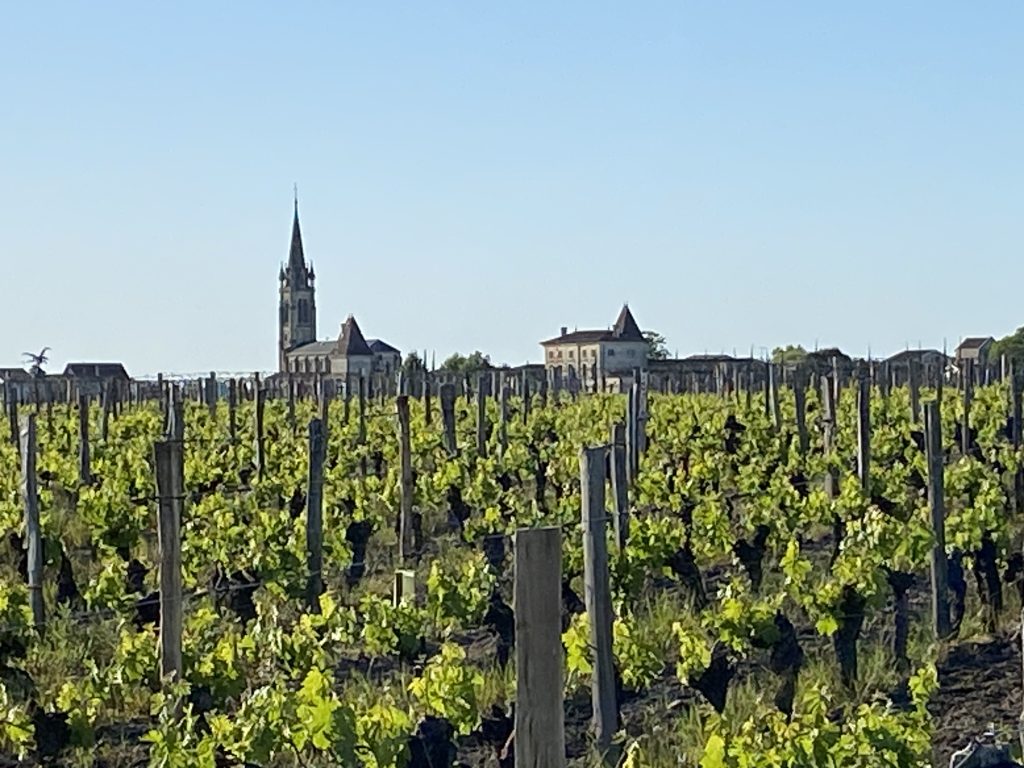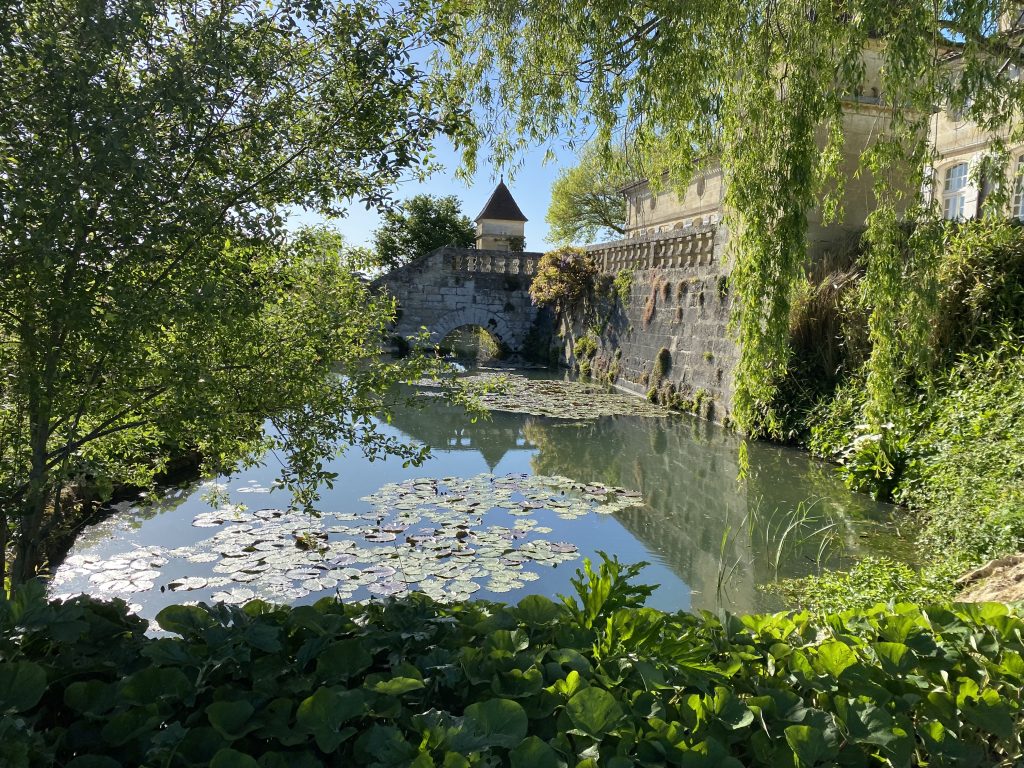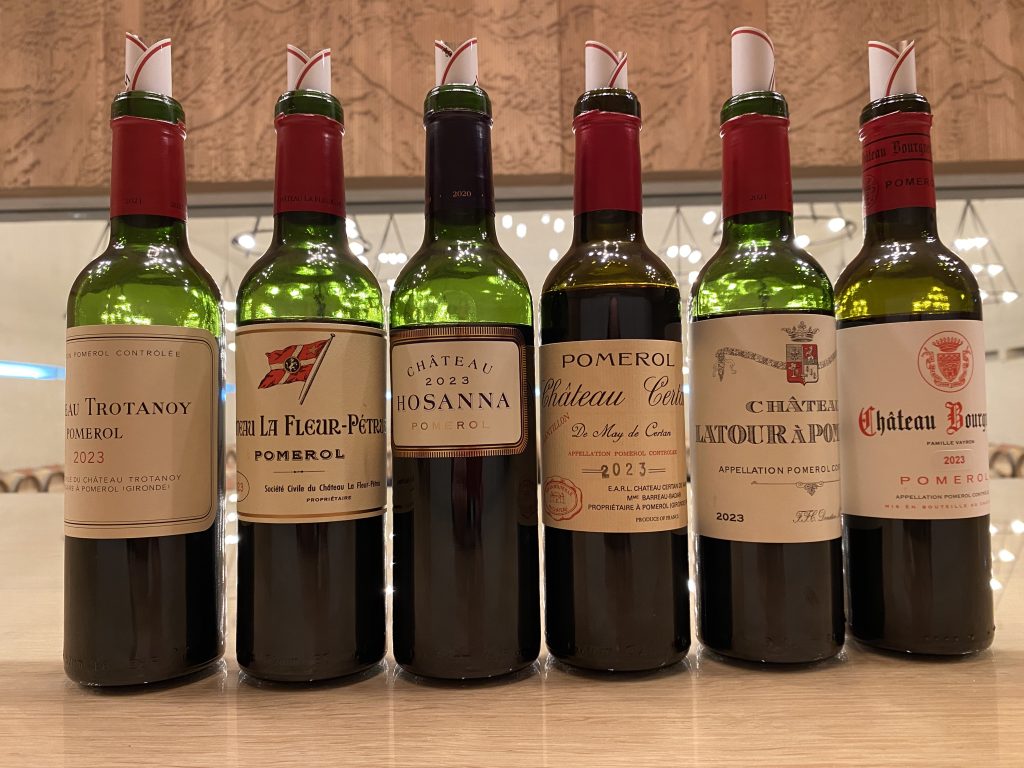This website uses cookies so that we can provide you with the best user experience possible. Cookie information is stored in your browser and performs functions such as recognising you when you return to our website and helping our team to understand which sections of the website you find most interesting and useful.
Pomerol 2023 en primeur: spectacular top end wines amid a complex vintage
Pomerol is the next destination of Colin Hay’s appellation-by-appellation tour of the Bordeaux 2023 en primeurs. Here he finds a complex picture, where an impressive number of wines at the top end sit alongside others that fall below their 2019, 2020 or 2022 counter-parts.

We have gravity on our side as we continue our right-bank journey down the hill from Saint Émilion past Figeac and Cheval Blanc to arrive in Pomerol – and it doesn’t take nearly as long to get here as it did for us to get from St-Estèphe to Saint Émilion.
In any meteorologically challenging vintage Pomerol is likely to be complex. It was in 2021, it was in 2022 and it is again in 2023. If we look at the meteorological record of the vintage (as, for instance, in Table 1) and the average aggregate vineyard yields (as in Table 2) it is certainly tempting to suggest that Pomerol’s experience was ultimately similar to that across the appellation border in Saint Émilion, but that it coped better and was perhaps always likely to do so.
|
Pre-budburst (Nov-March) |
Budburst to Harvest (April-mid October) |
Total (1/11-15/10) |
|
| Pomerol | 338 (-31.5%) | 470.0 (+14.5%) | 808.1 (-10.9%) |
| Margaux | 398 (-19.3%) | 464.6 (+11.0%) | 862.6 (-5.7%) |
| St Julien | 458 (-5.8%) | 441.3 (+13.3%) | 899.2 (+1.2%) |
| Pauillac | 458 (-5.8%) | 441.3 (+13.2%) | 899.2 (+1.2%) |
| St-Estèphe | 550.7 (+3.0%) | 411.8 (+4.7%) | 912.5 (+1.5%) |
| Pessac-Léognan | 426 (-12.4%) | 469.4 (+14.5%) | 895.2 (0%) |
| Saint Émilion | 306 (-37.1%) | 490.8 (+18.1%) | 796.8 (-11.8%) |
Table 1: Rainfall during the vintage (relative to 10-year average)
Source: calculated from Saturnalia’s Bordeaux 2023 Harvest report
Yet that, to me, does not seem quite right. In a vintage of glass ceilings, it is certainly true that Pomerol largely avoided the horrific vineyard losses experienced in some parts of Saint Émilion where mildew became almost as endemic as it did in the Entre-Deux-Mers. And that, of course, is sufficient in itself to account for the rather higher overall yields in Pomerol than in Saint Émilion. But that, in the end, is the point. For, although far fewer Pomerol vineyards were entirely ravaged by mildew, the experience for those whose mildew losses were relatively small was in the end remarkably similar – and certainly no less heterogenous Having tasted some 80 or so wines from the appellation, then, I do not agree with the view that Pomerol had it easier and is one of the more homogeneous of the leading appellations in this vintage. It rarely is in my experience.
| 2019 | 2020 | 2021 | 2022 | 2023 | 10-year average | Relative to 10-year average (% change) | |
| Pomerol | 43.0 | 39.8 | 28.9 | 32.3 | 45.2 | 36.1 | +25.2 |
| Margaux | 49.2 | 36.3 | 38.6 | 31.3 | 37.7 | 39.7 | -5.0 |
| St Julien | 45.5 | 34.3 | 35.2 | 34.3 | 50.3 | 40.1 | +25.4 |
| Pauillac | 46.7 | 37.4 | 35.1 | 34.8 | 47.1 | 39.7 | +18.6 |
| St Estèphe | 49.7 | 41.2 | 40.7 | 31.5 | 51.6 | 43.4 | +18.9 |
| Pessac-Léognan rouge | 47.2 | 34.6 | 30.7 | 35.7 | 38.1 | 38.5 | -1.0 |
| St Emilion (GC) | 43.0 | 36.7 | 27.5 | 41.2 | 40.5 | 37.2 | +8.9 |
Table 2: Average vineyard yield by appellation (hl/ha)
Source: calculated from Duanes data compiled by the CIVB Service Economie et Etudes
But that is absolutely not to challenge the idea that it has produced, at the top-end, an impressive number of the wines of the vintage. It has and that is not in question. But, as in Saint Émilion, the descent from the summit is relatively steep. Here it becomes ever more vertiginous the further one travels from the core of its historic plateau.

There are perhaps 30 or so genuinely great wines here, but there are plenty of others that are far from the qualitative equivalent of the same property’s 2019, 2020 or 2022.
Atop the twin peaks that form the summit of the appellation in 2023 we find a legendary Lafleur of shimmering and gracious beauty and a sublimely seamless, poised and gracious Le Pin.
What is also so fantastic in this vintage is how each of the leading wines of the appellation is so true to both its style and to its terroir. This is a vintage for the blind taster!
La Conseillante, above all, could be no other wine – it is plump, plush, rich and effusive, the heart and soul of the Pomerol plateau.
L’Eglise-Clinet is very different, intimate and introspective where La Conseillante is boisterous and explosive. It is incredibly supple, subtle, succulent and sapid – a wine of staggering grace and beauty that reminds me of the great vintages of Denis Durantou.
Petrus is very different again – utterly gracious and beguiling despite its amplitude and disguised power, the proverbial iron fist in the silk glove.
And Vieux Château Certan is simply divine – floral, aerial, elegant, graceful and utterly captivating in this vintage.
There is also plenty here to entice those for whom the price of the leading wines of the appellation (driven in part by their scarcity) places them out of reach. Guillot Clauzel is, once again, a hidden jewel forged from the terroir equivalent of a diamond field. Porte Chic, Lécuyer (recently acquired by Ronan Laborde of Clinet) and De Sales are all also likely to represent fabulous value for a rather more modest investment. And placed somewhere in between, La Petite Eglise, Beauregard, Bourgneuf and Feytit-Clinet provide a quartet of wines to showcase the diversity of Pomerol’s top terroirs without threatening to break the bank.
Highlights in 2023

Wine of the appellation:
- Lafleur (98-100)
- Le Pin (98-100)
Truly great:
- La Conseillante (97-99)
- L’Eglise-Clinet (97-99)
- Petrus (97-99)
- Vieux Chateau Certan (97-99)
- L’Evangile (95-97+)
- La Fleur-Pétrus (95-97+)
- Trotanoy (95-97+)
- La Connivence (95-97)
- Guillot Clauzel (95-97)
- Les Pensées (95-97)
- Clos du Clocher (94-96+)
- Petit Village (94-96+)
- La Violette (94-96+)
Value picks:
- Guillot Clauzel (95-97)
- La Petite Eglise (93-95+)
- Beauregard (93-95)
- Bourgneuf (93-95)
- Feytit Clinet (93-95)
- Lécuyer (93-95)
- Porte Chic (92-94+)
- De Sales (92-94)
See here for Colin’s full tasting notes for Pomerol and his appellation analysis for Margaux, St Julien, Pauillac, St Estèphe and Saint Émilion.
Read more:
A guide to Bordeaux 2023 in ten questions
Bordeaux 2023 vintage report part I: quality and quantity together, for once
Bordeaux vintage report part 2: a vintage of reactivity, vigilance and surveillance

